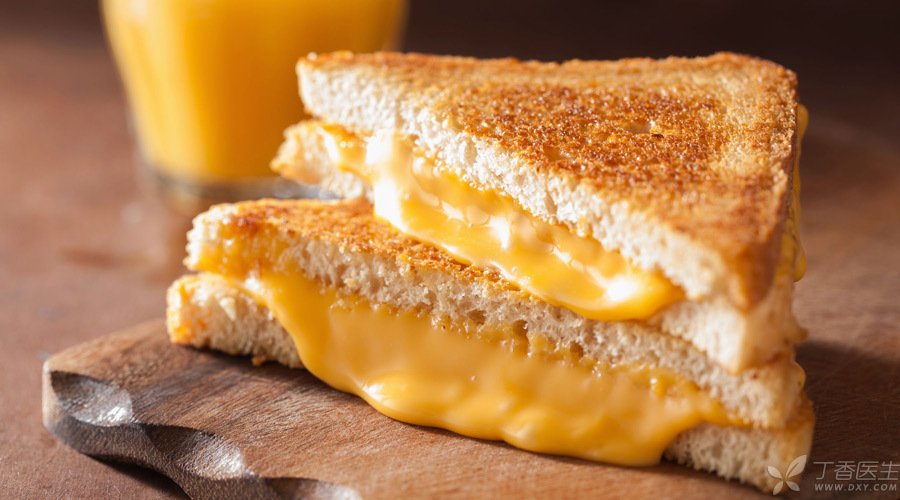
If I ask my favorite food is what?
That bread is definitely ranked TOP 3.
However, there are always [kind people] to advise: eat less bread, it is all additives.
There are more than a dozen additives in bread?
This statement is true for bread sold in most supermarkets with a shelf life of several months.

These more than a dozen additives are mainly preservatives, leavening agents, acidity regulators, sweeteners and emulsifiers.
As a kind of food with high water content, sugar and fat, bread is always harassed by mold and bacteria. In order to prolong the shelf life of bread and protect bread from microorganisms, manufacturers have to add preservatives to their prepackaged bread to ensure food safety.
Bread sold in bakeries is rarely added with preservatives, so the shelf life is only 1 or 2 days.
The leavening agent, acidity regulator and emulsifier can help fermentation and prevent bread aging. Sweeteners can improve the taste. Generally speaking, it is all to make bread softer, bigger and better to eat.
It is said that bread improvers are used in bakeries, which can cause cancer.
The “bread improver” that has been blacked out the worst on the Internet is actually a kind of compound food additive, which consists of several kinds of oxidant, emulsifier, enzyme preparation, reducing agent leavening agent, preservative, fermentation aid, soybean flour, etc.
Bread improver or food additive, as long as it is used within the safe use range and dosage stipulated by the state, there is no need to worry about safety. The so-called [carcinogenicity] is even more nonsense.
If you cannot leave bread every day and cannot go to the bakery every day, you cannot leave these additives.
Margarine in bread?
Rumor has it that bread is made of margarine, which contains trans fats and is harmful to health.
Indeed, in order to make the taste more fragrant and the shape stronger, the oil in bread is indispensable. In order to reduce the cost, relatively cheaper hydrogenated vegetable oil (margarine, margarine) has become the first choice of most bakers.

Trans fat is a high-risk factor for cardiovascular diseases, diabetes and other diseases.
Although the trans fatty acid content in many hydrogenated vegetable oils can be as low as a few tenths of a percent through technological improvement, and the products of many large manufacturers have also indicated that the trans fatty acid content is zero, the trans fatty acid content in some small workshop products is still quite high.
Therefore, pay attention to the nutritional composition table and choose bread that does not contain trans fat.
In addition, you should also look at the ingredient list and try to buy bread made of [natural butter and cream]. Although it is more expensive, it tastes better.
Bread: Hidden Oil, Sugar and Calories
In fact, compared with safety, the sugar, oil and calories hidden under the attractive appearance of bread should be paid more attention to.
The best selling [BRICS bread] (450g) uses more than 150g of butter, and every mouthful is full of oil…
A sad fact is that these breads you love are not low in calories:
- All crisp or layered breads, such as croissants and Danish bread; Bread with cream cheese stuffing, jam stuffing, coconut paste stuffing and bean paste stuffing; Prepackaged hand-torn bread and soft bread sold in supermarkets.
Let’s look at a few data casually:
- A brand of hand-torn bread: 359 kcal/100g a brand of croissant: 446 kcal/100g a brand of French soft bread: 405 kcal/100g
However, the calories of rice (cooked) that we mistakenly believe to be a big taboo for weight loss are: 170 kcal/100g
Those students who eat a few loaves of bread at a time, do you know the reason why you have gained weight?
Bread should be eaten like this.
Bread is not low in calories, but it does not mean that bread cannot be eaten.
As a dead star who doesn’t eat bread, here are some simple tips:
If you take bread as your staple food every day or go out for an outing to supplement your strength, it is recommended to choose baguette (which has only half the calories of pastry bread), dalieba, whole wheat bread, sliced bread with less sugar and oil, and the now popular non-invaginated soft European bread.
Whole wheat bread is not delicious…
The solution is simple: bake!
Because of the [pentosan] in whole wheat bread, it will smell more fragrant than white bread after baking.
As for those delicious fancy breads, as long as they are not eaten every day and every meal, it is no problem to relieve cravings occasionally on the premise of controlling the total calories of the day.
One premise: Please try to choose large brands or bakeries with no black history of food safety, and do not buy three-no products online.
Of course, if strict attention is paid to hygiene, family self-control is also good.
How to save bread?
If it is a prepackaged product purchased, please store it according to the packaging requirements and eat it within the shelf life.
If you buy bakery products or home-made bread, according to the variety of bread, the storage time should not exceed 3 days in summer and 4 days in autumn and winter. In humid and hot environment, the storage time should be shorter.
If there are jam, bean paste and other stuffing in the bread, the shelf life will be shorter. They are all good food for bacteria.
If you want to extend the shelf life, you can put it in the freezer and take it out and heat it in the oven or microwave oven before eating.
Friendly reminder: Don’t put bread in the refrigerator! This will accelerate the aging of bread, which is so bad that you don’t even know it.
